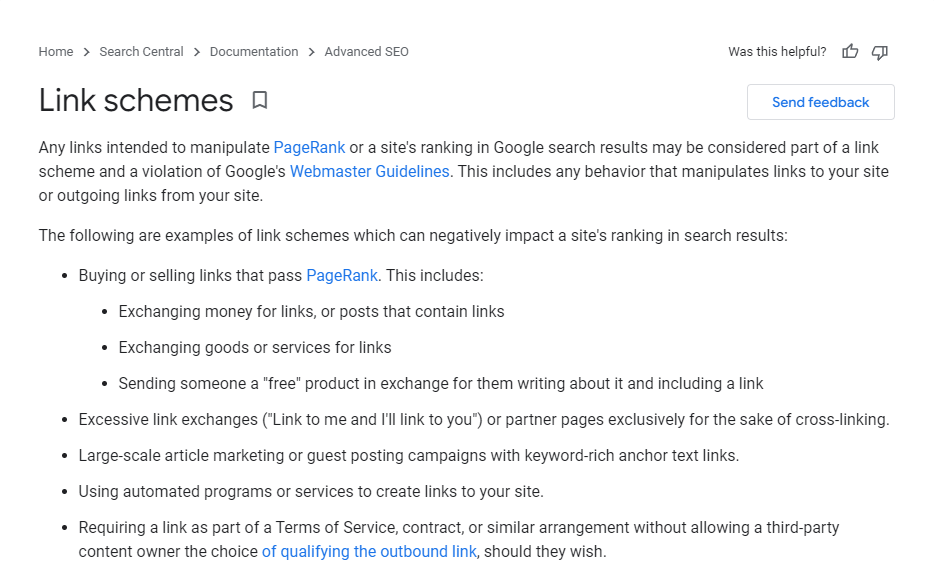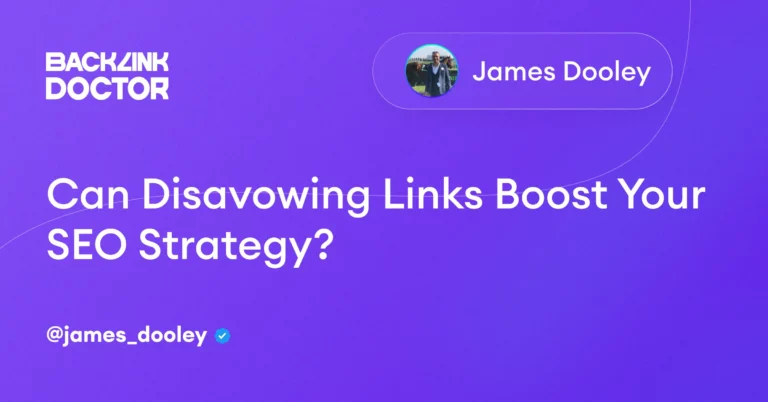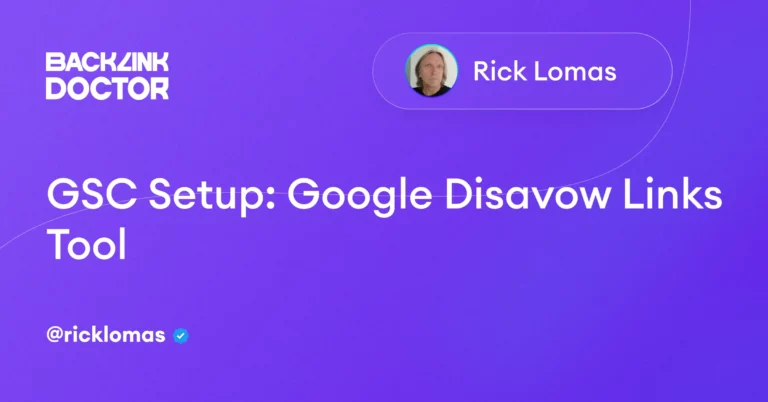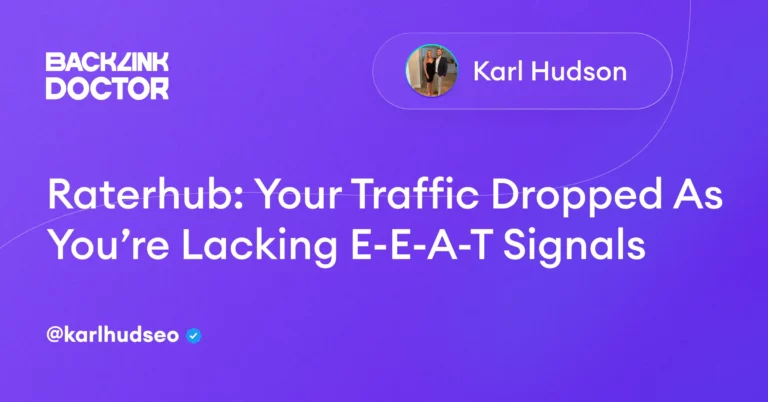You may think that the more backlinks you amass, the higher your website will ascend in the search engine rankings. However, this is a common misconception. In the intricate game of Search Engine Optimization (SEO), it’s not about the quantity of backlinks but their quality.
Picture the impact of having an influential industry leader endorsing your services—undeniably, this drives substantial web traffic your way. Similarly, a high-authority website linking to your site bolsters your credibility, elevates your search engine rankings, and positions your brand as a tier-one contender. However, it’s crucial to remain vigilant: some backlinks can harm your rankings and must be avoided.
To safeguard your site against subpar links, become acquainted with the attributes of low-quality backlinks, the types search engines disfavor, and how to manage an undesirable link profile.
Alternatively, you may opt for a specialized link audit service to guide you through generating safe and effective disavow files tailored to your website in July 2024.
With the insights from this post and a keen focus on quality over quantity, you can fortify your future link-building strategy and shield your site from the pitfalls of spammy link building. Immerse yourself in the intricate world of backlinks, and together, let’s excel at achieving exceptional search engine ranking.
Stay Alert: Carefully Choose Who Represents Your Endorsements in Google’s Eyes
However, what if the endorsement comes from a notorious individual? A “recommendation” from such a source could tarnish your reputation. Similarly, a backlink from a disreputable website can be detrimental to your site’s ranking.
Intriguingly, not all detrimental backlinks are self-inflicted. Some are stealthily created without your knowledge, waiting to strike at an unexpected moment. This is where Google steps in, acting as a regulator to discern and penalize link schemes intended to manipulate its algorithm.

Decoding the Attributes of a Toxic Backlink
So, what constitutes a “bad” backlink? These troublesome links typically originate from websites exhibiting tell-tale signs of spam, such as thin content, slow loading times, generic web design, excessive ads, abundant outbound links, and a lack of social media presence.
The Most Damaging Types of Bad Backlinks
Bad backlinks come in various guises, from spammy blog comments to low-quality directory links. Yet, some are more damaging than others:
Public Listing Guest Post Links

An attractive offer to include your link in a high-authority guest post may seem tempting. However, if the offer originates from a public list, it could expose your site to significant risk. These lists are frequently disseminated en masse, and if they fall into the wrong hands, such as Google’s, the sites on the list could be blacklisted.
In the email, there’s also a Gdocs link to the list of high-authority sites (DA 60 and above).

Just to clarify, there’s absolutely nothing wrong with strategically building links via guest posting when done correctly. In fact, having your blog post published on another reputable site with a backlink pointing to your website is an effective way to bolster your link profile.
Additionally, link buying is a prevalent strategy in the industry — industry insiders understand that the goal is to include backlinks naturally and contextually, so that they bring true value to the content.
However, this email seems to have ignored a crucial rule of thumb in effective link building:
Never purchase backlinks from sites that search engines can easily trace back to their buyer.
Acquiring links from a list that’s likely been distributed to countless recipients could severely impact your site’s performance, regardless of how natural or valuable your link may be in the blog post.
Keep in mind that the widespread nature of this list means someone may have reported these sites to Google. Even worse, a Google employee could have gotten hold of the list and subsequently blacklisted those sites from the search engine’s algorithm.
Thus, it’s crucial that you closely monitor your site’s SEO, particularly if you’ve procured backlinks from vendors who openly share their guest posting lists.
There’s a strong possibility your website hasn’t been impacted yet; however, with Google’s constantly evolving algorithm, it’s always better to err on the side of caution.
Cheap Link Services
As Murphy’s Law suggests, if something seems too good to be true, it most likely is.
This holds true for most bargain link-building services as well. Although there might be a few exceptions, it’s rare to come across inexpensive yet effective link-building solutions.
More often than not, the links constructed by these low-cost services may backfire in the long run, especially after a Google algorithm update.
Platform-based services, like Fiverr, where people offer DA 90+ links for just $5, are prime examples of what to avoid.
To be fair, it’s important to note that not all service providers on these platforms are disreputable. So, for those feeling adventurous, you could test out a few links on experimental websites to gauge their impact on performance over time.
However, it’s generally a smarter move to stick with well-established tactics provided by experienced vendors, even if they come at a higher price. After all, investing in quality and expertise often yields better long-term results.
Mismanaged PBNs (Private Blog Networks)
PBNs, or Private Blog Networks, encompass a collection of blogs designed to generate links for client and money sites. These blogs frequently boast impressive SEO metrics such as DA, DR (Ahrefs’ Domain Rating), and Flow Metrics (Majestic’s Trust Flow and Citation Flow).
Harnessing their authority enables site owners to acquire backlinks that catapult their search rankings higher and at a faster pace than any other link-building strategy.

So, why does this practice qualify as a potentially risky backlink?
The stakes are high with PBN links; your site may be exposed and penalized if you’re not careful. For instance, linking from PBN homepages to your money page can be a red flag.
While, in theory, linking directly from a homepage to the money site maximizes link juice, doing so frequently may allow Google to detect your link-building patterns and trace them back to the originating sites.
Upon discovering similarities between these sites, such as blog layout and content structure, Google might determine they belong to the same PBN, resulting in penalization and loss of your website’s organic search ranking.
The manner in which you link from PBNs is just one of the numerous precautions you must take when utilizing them for link building. Ensuring Google can’t trace your blogs back to you as their owner is another vital concern.
However, links from PBNs may still prove effective ONLY IF the PBN owners meticulously cover their tracks, and you can only verify this if you have an open line of communication with the owner.
That being said, your best bet is to steer clear of this technique unless you’re well-versed in its intricacies. Avoid it like the plague, if you’re unsure of what you’re doing.
https://inspiremelabs.com/the-ultimate-pbn-footprint-checklist/
Illegal Link Insertions
In the ever-evolving world of digital marketing, savvy marketers seek cutting-edge ways to elevate their online presence. Enter link insertions or niche edits – a highly effective link-building strategy utilized by industry frontrunners.
Unlike traditional guest posting, this technique involves integrating dofollow links into an established, indexed page on the host site. Google, already familiar with these pages, considers the resulting backlinks more potent than those from new posts.
As long as your links bring tangible value to the content, you’ve got Google’s green light! However, beware the dark side of link insertions – illegal practices that can tarnish your reputation.
A recent Buzzfeed exposé brought “hacked links” to the forefront. It unveiled legitimate site owners who were baffled to find unsolicited links on their websites. These rogue links presented through injected scripts, allowing third parties to profit from embedding client links without authorization.
Illicit link insertions can be a double-edged sword – while they may boost clients’ rankings, they can also damage sites by drawing hacked backlinks from spam-ridden sources. This nefarious tactic often originates from vulnerabilities in content management systems, such as WordPress, or inadequate malware protection.
To keep your brand reputation intact, exercise caution – partner only with well-vetted vendors offering link insertions. Trust and transparency are key, so don’t hesitate to explore other methods for fortifying your backlink profile.
Negative SEO
It’s not a sinister backlink scheme, but rather a “tactical maneuver” that, rather than bolstering sites’ standings on the SERP arsenal with prime-quality backlinks, employs similar means for a nefarious outcome.
Negative SEO, regrettably, permeates the digital marketing battlefield. These covert competitors craft spam-infested backlinks on your terrain, dragging your site to undesirable depths, and stealthily outranking you in turn.
Picture the age-old adage, “If I can’t have the prize, no one shall!”—now on an SEO stage.
Harsh tales of negative SEO haunt the industry’s history. From Spencer Haws’ chilling 2013 revelation to Kinsta’s candid account of their negative SEO ordeal, no brand is truly impervious to these insidious onslaughts.
Case in Point: Spammy Viagra Links

Fear not! If negative SEO infiltrates and debilitates your site, there are paths to recovery. Albeit, the road to redemption demands laborious work – an unwelcome burden you could surely do without on your journey to digital marketing success.
Discover the Tools You Need to Spot Nefarious Backlinks
Manually inspecting each backlink is time-consuming and tedious. Thankfully, you can leverage tools to extract and analyze all your backlinks. Here are some of the best ones:
Instead, embrace these powerful, ultra-efficient tools designed to extract all your backlinks and provide valuable insights:
SEMrush
Revolutionize your site analysis with SEMrush’s Backlink Audit tool. Simply enter your domain URL, and the platform will identify toxic links that might be holding your website back from ranking higher on SERPs.

Link Research Tools
Boasting the World famous Link Detox® and Link Detox Boost®, Link Research Tools provides an extensive overview of your link profile, breaking each link down into key SEO metrics.

Gain the insights you need to fight negative SEO and level up your link building campaigns. Although pricier than other options, LRT is unbeatable for large websites that face an onslaught of spammy links from competitors.
📹 During my live SEO clinic, I focused on harmful backlinks and strategies to address them. 📊 I emphasized the importance of regular backlink maintenance to manage toxic links.
Monitor Backlinks
For a wallet-friendly alternative to SEMrush and LRT, opt for Monitor Backlinks, the ideal solution for running backlink audits and cross-referencing referring domains across popular SEO variables. Analyze your backlinks based on vital factors like TLD, IP location, anchor text, dofollow vs. nofollow links, and more.

Backlink Blacklist
Operating on a tight budget? Quickly search your referring domains with Backlink Blacklist for a free and efficient method of identifying blacklisted sites. Although the tool won’t provide additional quality-related metrics, it offers ample evidence in the form of reasons and screenshots to demonstrate that you might be dealing with bad links.

What to Do with Bad Links to Your Site
Unearthing those dreaded bad backlinks is a piece of cake. Deciding your next strategic move towards them is the game changer, with no straightforward solution written in stone.
Imagine being faced with a set of toxic backlinks. Fear not, savvy marketer, you’ve got two ways to navigate this situation:
1. Embrace the Art of Patience
If those menacing links haven’t clawed away at your site’s rankings just yet, it’s wise to stay put and keep a watchful eye on things.
Monitor their impact on your organic rankings with your trusty SEO weapon of choice. Perhaps your rankings might take a hit soon, but it’s equally possible that Google has your back, disregarding those spammy links deliberately crafted to tarnish your site.
Should those toxic backlinks prove harmless, let them be, and focus on amplifying the valuable segments of your website instead.
Keep executing the strategies that have driven traffic your way and analyze which techniques emerge as the true conversion champions.
Turn your attention towards constant improvement, brushing away the hypothetical dust of yet-to-materialize disasters.
2. Go Disavow
Now, if these terrible links have already wreaked havoc on your website, it’s time to rise like a phoenix and disavow them to regain your footing in the SERP battle.

If Google Search Console spots unnatural links and sends a warning, you’ll know it’s time to take action.

To generate a disavow file seamlessly for uploading to the Disavow Links page within your Google Search Console, employ a reliable backlink tool such as Monitor Backlinks. This will enable you to systematically pinpoint the specific links you intend to disavow, ensuring a proficient and accurate approach to maintaining your link profile.

But remember, steer clear from disavowing unless Google has issued a manual action against your site. Trust the search engine behemoth to discern which links should hold weight in your SERP score.
3. The Road Ahead
Tackling bad backlinks is indeed a treacherous journey.
While some emerge from inadequate diligence, others might be sly traps set by jealous competitors. But remember, not all backlinks need action taken against them – only those negatively impacting your search rankings warrant disavowing.
So, what’s the key takeaway? All sites have their share of bad links.
What truly makes the difference is refining your SEO strategies with the insights gleaned from this guide and utilizing the tools at your disposal. Stay vigilant about tracking your backlinks, and determine whether any pesky links adversely affect your organic traffic.
Embark on a path towards building better links that propel your search rankings to greater heights.



